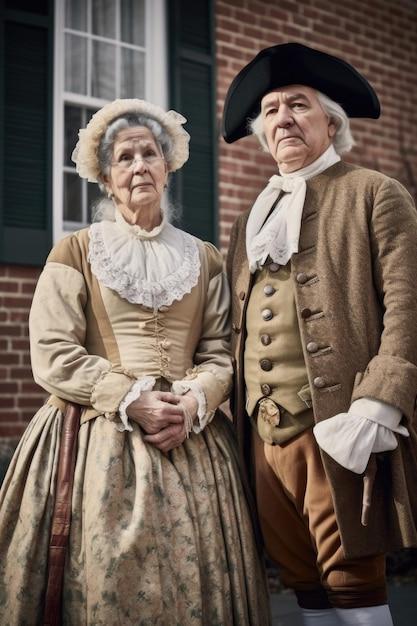The Renaissance, which means “rebirth” in French, was a profound period of cultural and intellectual transformation that took place in Europe between the 14th and 17th centuries. Historians often associate this remarkable movement with Italy, and for good reason. During this time, Italy became the epicenter of artistic, literary, and scientific advancements that have had a lasting impact on the world we live in today.
But why did the Renaissance flourish in Italy? What set the stage for this explosion of creativity and innovation? One key factor was the influential role played by wealthy merchants. These astute individuals, driven by both personal ambition and a desire for prosperity, became the catalysts for change in Italian society.
In this blog post, we will explore the reasons behind the support of wealthy merchants in kickstarting the Renaissance in Italy. We will delve into the concept of human potential and achievement, the worldly aspirations driving the merchants, and the transformative effects their beliefs had on art. Join us on a journey to uncover the fascinating story of how the Renaissance came to be in 14th-century Italy.

Why Wealthy Merchants Played a Crucial Role in Sparking the Renaissance in Italy
The Renaissance, a period of profound cultural and artistic transformation, owes much of its flourishing to the support and patronage of wealthy merchants in Italy. But what exactly motivated these financially successful individuals to foster such an extraordinary era? Let’s delve into the reasons behind the pivotal role played by these affluent traders.
A Prosperous Playground for Artistic Minds
Italy in the 14th to 16th centuries was a vibrant hub of commerce, drawing merchants from across the globe. Laden with wealth, these merchants sought avenues to express their sophistication and refine their societal standing. What better way to achieve this than by investing in the arts?
Investing in art was like a stock market gamble, except instead of fluctuating stock prices, you had the chance of your commissioned portrait hanging in a fancy gallery.
A Leap from Royalty to Merchant Aristocracy
In a world predominantly controlled by nobility, wealthy merchants were eager to elevate their social status. By supporting renowned artists and innovators, they established themselves not only as arbiters of fashion and culture, but also as intellectual equals to the monarchy. It was a way for these businessmen to prove that wealth could indeed buy influence and prestige.
If 14th-century Instagram was a thing, these merchants would be the influencers – turning heads with their dazzling art collections instead of fancy vacations in Bali.
Fostering Intellectual Exchange
Wealthy merchants were known for more than just their deep pockets. They were avid collectors of knowledge, hungry for new ideas and discoveries. By encouraging the exchange of ideas, sponsoring scholarly circles, and hosting lavish salons, these patrons of the Renaissance paved the way for intellectual discourse and nurtured an environment ripe for innovation.
Forget 15th-century TED Talks, these gatherings were like the G8 summits of the intellectual elite; except the only thing they were trying to agree on was which Renaissance artist had the best beard.
A Competitive Race for Immortality
In an era where religion played a central role, the wealthy had a vested interest in securing their place in the afterlife. Commissioning grandiose works of art for churches and cathedrals not only showcased their devotion, but also immortalized their names for generations to come. It was an opportunity to leave a lasting legacy that would be forever associated with the grandeur of the Renaissance.
Leaving behind a mural in a church was like the ultimate power move – it’s like saying, “Hey, even after I’m gone, people will still admire me while they’re sitting through sermon after sermon.”
Pushing Boundaries and Inspiring Innovation
The Renaissance was a time of exploration and experimentation, and wealthy merchants were at the forefront of pushing boundaries. By supporting adventurous artists and groundbreaking scientists, these patrons fueled the fire of creativity and provided the financial security needed for artists to pursue their dreams. In doing so, they catapulted the Renaissance into unexplored realms of human achievement.
Move over, venture capitalists! These merchants were the OG risk-takers, pouring their money into unproven artists like they were the next Amazon or Apple. Well, maybe not that profitable, but they definitely saw the potential!
So, why did wealthy merchants play such a vital role in kickstarting the Renaissance in Italy? It was their insatiable thirst for prestige, their desire to leave a lasting legacy, and their dedication to fostering intellectual growth. Through their patronage and support, they created an environment where artists could thrive, ideas could flourish, and the Renaissance could bloom into a cultural revolution that would forever shape the course of history.
And thus, amidst the tales of daring merchants and artistic brilliance, the Renaissance emerged like a flutter of wings – the proverbial phoenix rising from the ashes of the medieval world.

FAQ: Why did wealthy merchants help the Renaissance start in Italy?
What movements main focus was human potential and achievement
One of the movements that focused primarily on human potential and achievement was the Renaissance. This remarkable period of cultural rebirth in Europe, which took place from the 14th to the 17th century, emphasized the value of human intellect and creativity. It celebrated individualism, innovation, and the pursuit of knowledge, paving the way for significant advancements in art, science, literature, and philosophy. The Renaissance was a pivotal time that propelled human civilization forward and encouraged people to reach their full potential.
What is another word for worldly
When it comes to describing something as worldly, another word that comes to mind is “secular.” This term signifies a focus on the material aspects of life, rather than the spiritual or religious realm. During the Renaissance, there was a shift towards embracing worldly matters, including wealth, trade, and the pursuit of pleasure. This emphasis on the secular was a departure from the dominance of religious influence during the Middle Ages and played a crucial role in shaping the Renaissance as a period of revitalization and exploration.
Why did affluent merchants play a significant role in starting the Renaissance in Italy
The rise of the Renaissance in Italy was heavily influenced by wealthy merchants, whose contributions proved to be instrumental in its initiation. These well-to-do individuals, often referred to as patrons, recognized the potential of the arts and sciences to stimulate cultural and economic growth. They understood that supporting talented artists, scholars, and thinkers would not only bring them prestige but also foster an environment of creativity and innovation.
Wealthy merchants were key players in establishing the economic foundations that spurred the Renaissance. Their successful businesses allowed them to accumulate substantial wealth and afforded them the means to support artists and intellectuals financially. By commissioning artwork, offering patronage, and providing opportunities for artisans and scholars to thrive, they created a prosperous environment where creativity and cultural breakthroughs flourished.
What major change did a belief in individual merit bring about art
The belief in individual merit instigated a significant transformation in the world of art during the Renaissance. Prior to this period, artists were often regarded as anonymous craftsmen, overshadowed by the institutions or individuals they served. However, as the Renaissance unfolded, the concept of individual genius and talent gained recognition and reverence.
With the rise of humanism, an intellectual movement that celebrated the capabilities of human beings, artists began to be acknowledged for their unique abilities and originality. The notion of individual merit meant that artists could rise to prominence based on their own talents and achievements, rather than solely relying on their association with a particular institution or noble patron. This shift in recognition ignited a burst of innovation, as artists were encouraged to explore new techniques, styles, and subject matters, forever changing the trajectory of art history.
What movement’s main focus was human potential and achievement
The movement that primarily concentrated on human potential and achievement was the Renaissance. During this extraordinary era, individuals were inspired to explore their capabilities, embracing the idea that human beings possess immense talent and intellect. The Renaissance encouraged people to strive for greatness, believing that through education, creativity, and dedication, they could surpass previous accomplishments and forge new paths of discovery.
The profound belief in human potential during the Renaissance fostered advancements in various fields, including art, science, literature, and philosophy. It propelled society forward and led to groundbreaking developments that shaped the course of history.
What word means worldly rather than spiritual
The word that signifies a focus on the material world rather than the spiritual is “secular.” This term reflects a perspective that prioritizes earthly matters over religious or metaphysical concerns. During the Renaissance, there was an expanded interest and appreciation for worldly affairs, such as commerce, politics, and individual pursuits. This secular mindset played a vital role in nurturing the growth of humanistic ideals, allowing for the exploration of knowledge, culture, and art that defined this transformative period.
